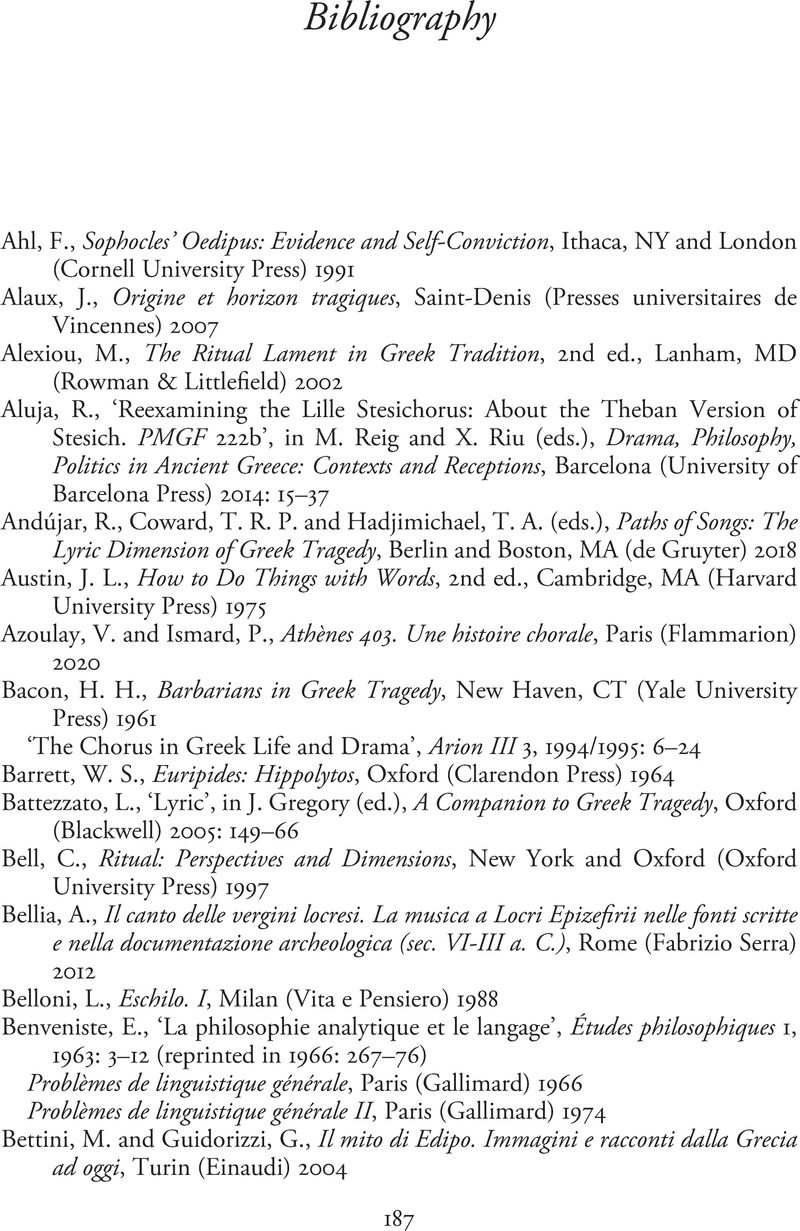Book contents
- Choral Tragedy
- Classical Scholarship in Translation
- Choral Tragedy
- Copyright page
- Dedication
- Contents
- Foreword
- Preface to the English Edition
- Note on the Translations
- Methodological Prelude
- Chapter 1 The Essence of ‘The Tragic’
- Chapter 2 Tragedy, Cult and Ritual
- Chapter 3 Choral Polyphonies and Tragedy
- Chapter 4 Aeschylus’ Persians
- Chapter 5 Euripides’ Hippolytus
- Chapter 6 Sophocles’ Oedipus Tyrannus
- Chapter 7 Poets, Tragic Diction and Tragic Fiction
- Bibliography
- Index of Names
- Subject Index
- References
Bibliography
Published online by Cambridge University Press: 25 April 2024
- Choral Tragedy
- Classical Scholarship in Translation
- Choral Tragedy
- Copyright page
- Dedication
- Contents
- Foreword
- Preface to the English Edition
- Note on the Translations
- Methodological Prelude
- Chapter 1 The Essence of ‘The Tragic’
- Chapter 2 Tragedy, Cult and Ritual
- Chapter 3 Choral Polyphonies and Tragedy
- Chapter 4 Aeschylus’ Persians
- Chapter 5 Euripides’ Hippolytus
- Chapter 6 Sophocles’ Oedipus Tyrannus
- Chapter 7 Poets, Tragic Diction and Tragic Fiction
- Bibliography
- Index of Names
- Subject Index
- References
Summary

- Type
- Chapter
- Information
- Choral TragedyGreek Poetics and Musical Ritual, pp. 187 - 204Publisher: Cambridge University PressPrint publication year: 2024

